|
Fawkham and Ash Archaeological Group
(FAAG)
The discovery
and excavation of a Late Iron-Age and Early Roman Farmstead at
Martin's Quarry, Longfield, Kent 1974 and 1979
TQ6084/6842
Pits
1974 S
C L
M U
T P
R AJ
1979 EA FR
EB JC DZ EC EV EP JD EK
DE DF DB
EX GP GT
HV GU GY
HU
In the 1974 excavation,
9 pits were discovered and in 1979, 20 more pits were found. The pits
came in various shapes and sizes and for most of them we have no sound
interpretation of use to offer. Uses suggested by experimental archaeology
include storage of grain, salting of meat, manufacture of silage,
storage of other foodstuffs such as beans, and nuts, water storage,
leather tanning, dyeing of wool and pottery making.
Four "tin
bath" rectangular shaped pits were discovered,
pits M and L north and
parallel to ditch N, and pits U and T south and parallel to Ditch JJ.
The late Peter J. Reynolds in his book "Iron Age Farm"
suggests these bath shaped pits may have been used for retting flax. If
lined with clay, these pits could have been used to soak the stalks of
the flax plant in water for ten or so days to allow bacterial activity
to break down the vegetable matter. The stalks would then have been
crushed and soaked for a further period and finally combed out over
spikes to extract the linen thread.
Pit S
Pit S was 32.5m east of base line, and 96m south of
peg A. It was 8m south-east of the eastern end of Ditch JJ and 2m west
of Ditch JB. This pit was oval in shape, 1.13m by 1.45m and 0.82m deep.
Context numbers MQ8 (Pottery)
(Animal Bone) and MQ22 (Pottery). Fragments of two large storage jars were
found at the bottom. There appeared to be a posthole packed with flints
at the top centre of this pit. (The drawn section is the only evidence
for this conclusion.)
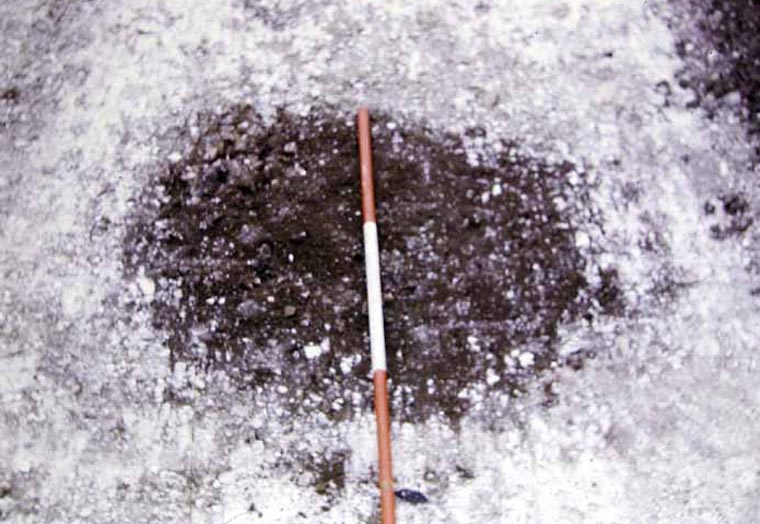
Pit S from the south after initial scraping
by machine, looking North
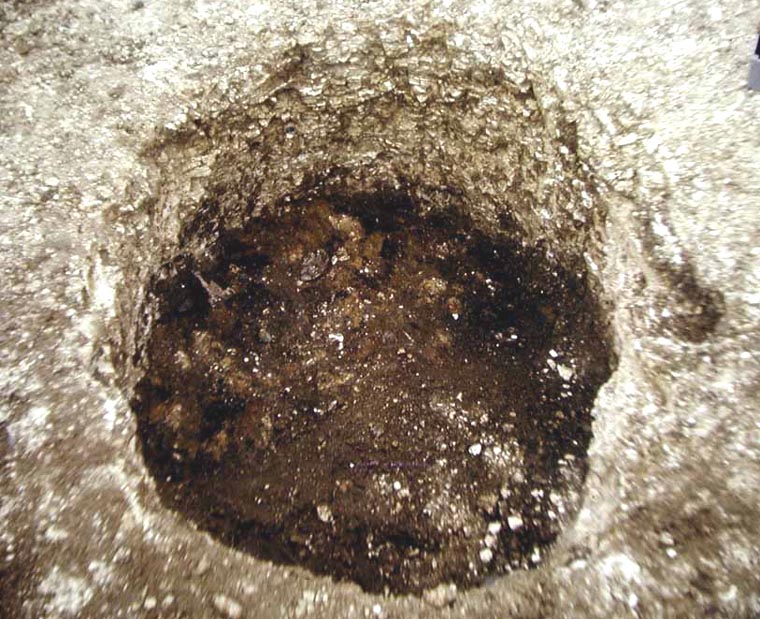
Pit S - excavated with fragments of pottery at bottom
(MQ8 and MQ22)
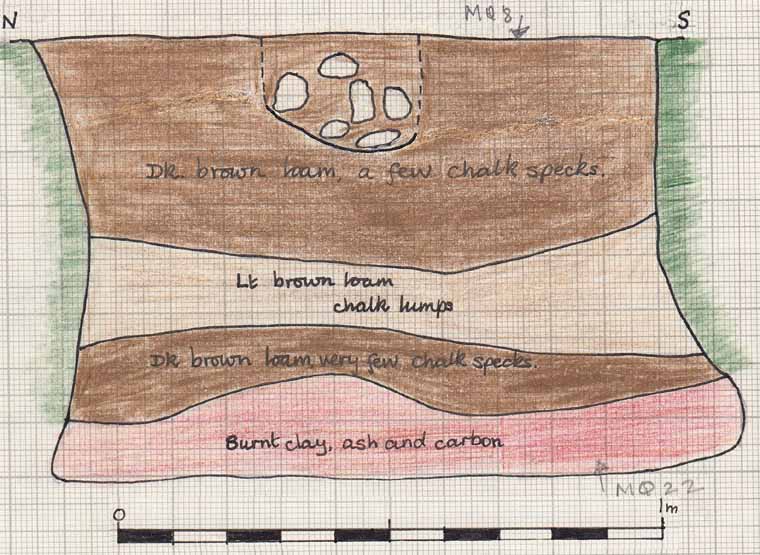
Pit S - drawn section 5 - North to
South
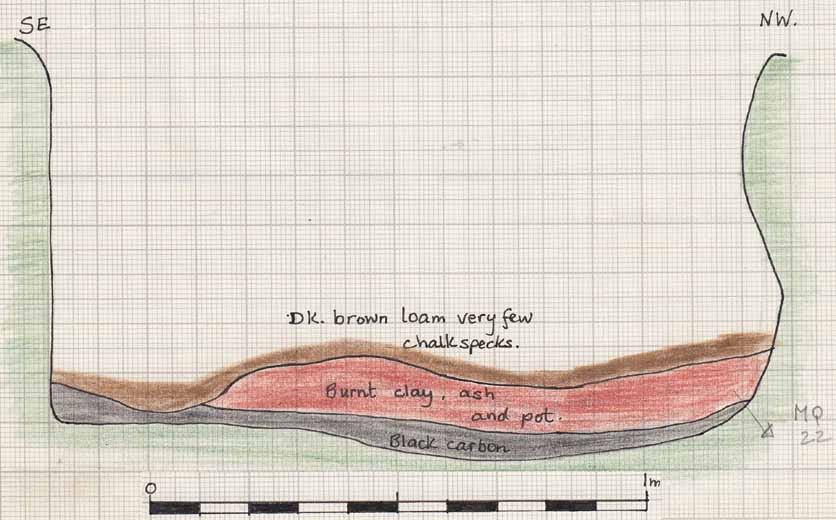
Pit S - drawn section 10 - South East to
North West
Pit C
Pit C was at the extreme west face abutting the quarry. It was destroyed
by machine on the first day of attendance. 6 sherds of pottery were
retrieved MQ6 (Pottery). No section drawing or photograph.
Pit L
Pit L was approx 0.45m deep, and 1.20m wide at the top and 1.05m wide at
the bottom, 2.5m long at the top and 2m at the bottom, i.e. with steeply
sloping sides. MQ7 (Pottery).
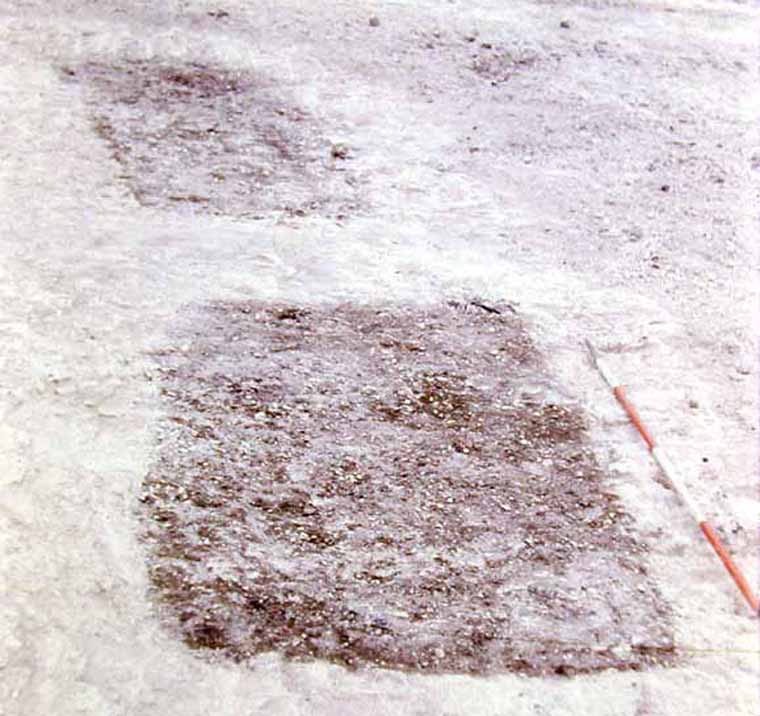
Pits L and M after initial scrapping,
looking West
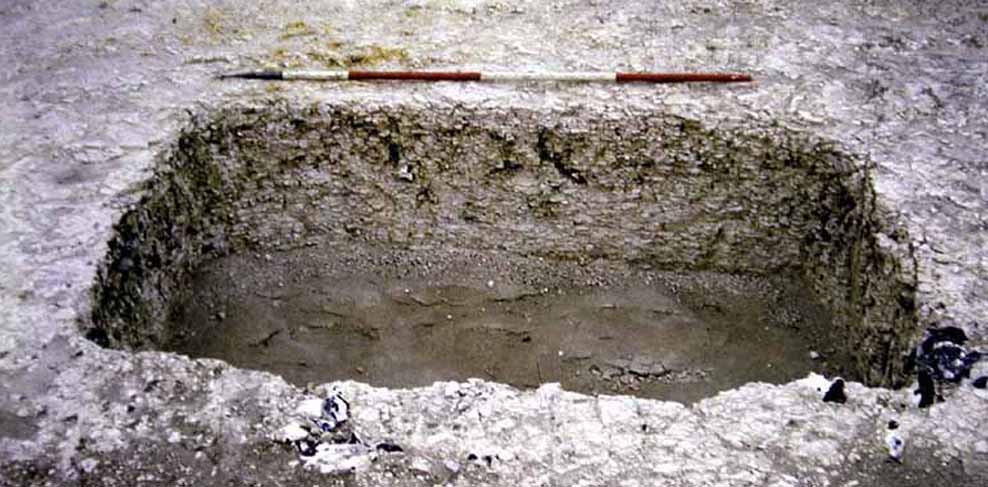
Pit L excavated,
looking North
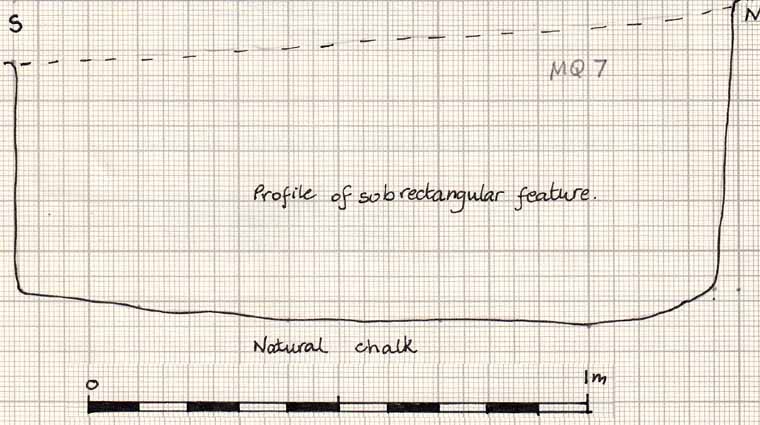
Pit L - drawn section L - South to North
Pit M
Pit M was approx 0.75m deep, and 1.15m wide at the top and 0.75m
wide at the bottom, 2.8m long at the top and 2.5m at the bottom, i.e.
with steeply sloping sides. Context number MQ18 (Pottery)
(Animal Bone).
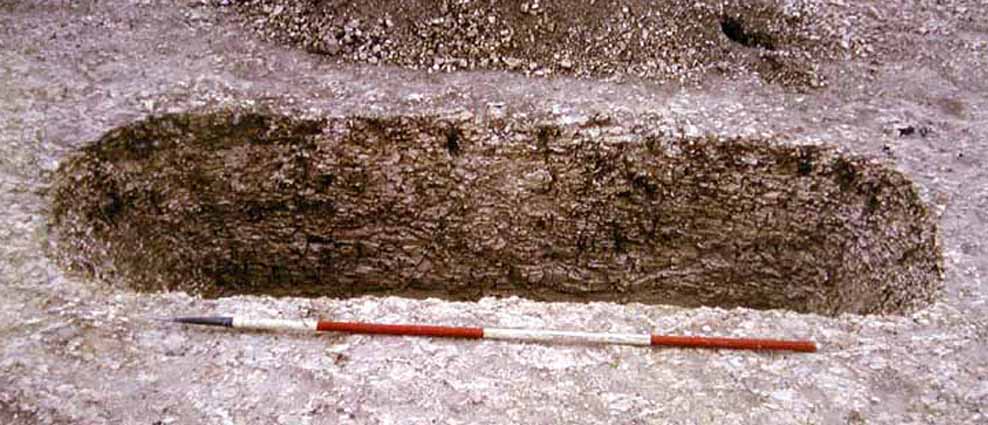
Pit M excavated,
from the North
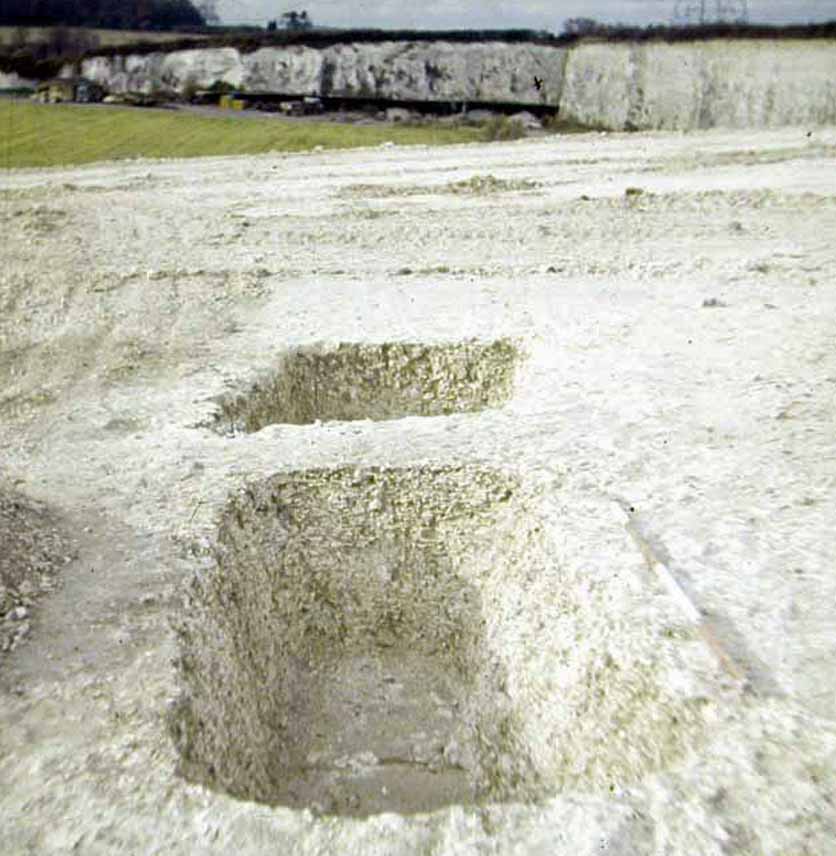
Pits M + L excavated from the East
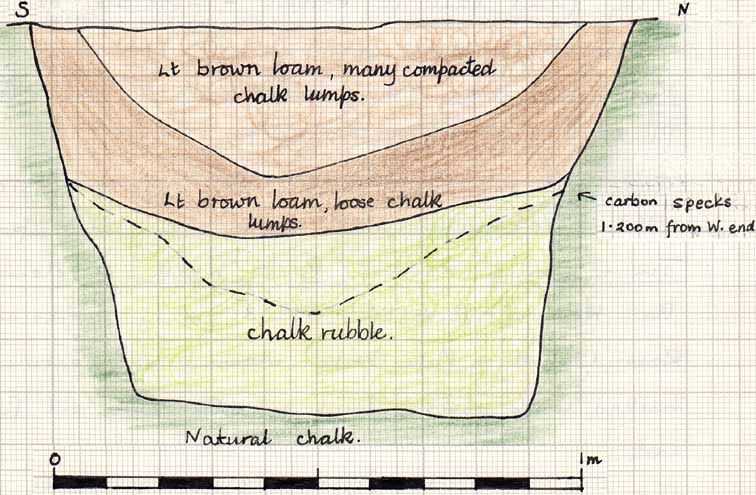
Pit M - drawn section 3 - South to
North
Pit U
Pit U was approx 0.45m deep, and 1.20m wide at the top and 1.05m
wide at the bottom, 2.5m long at the top and 2m at the bottom, i.e. with
steeply sloping sides. Context number MQ15 (Pottery)
(Animal Bones).
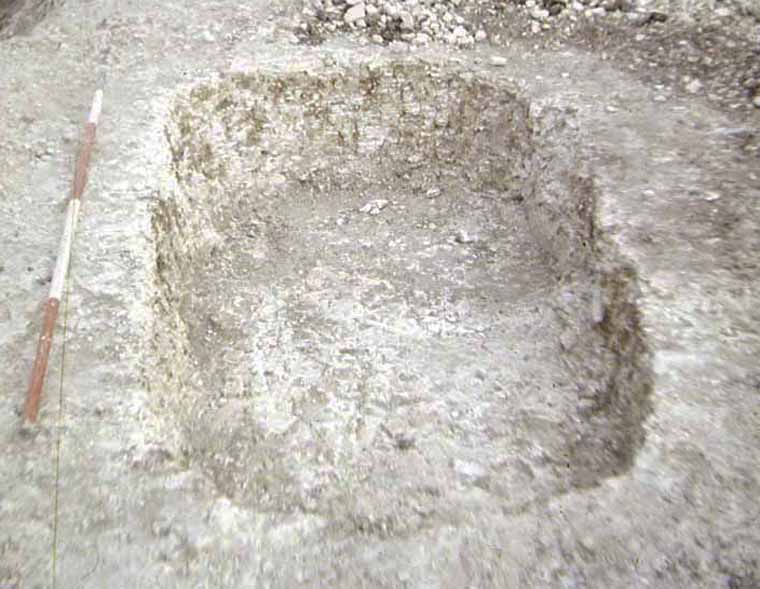
Pit U from the West
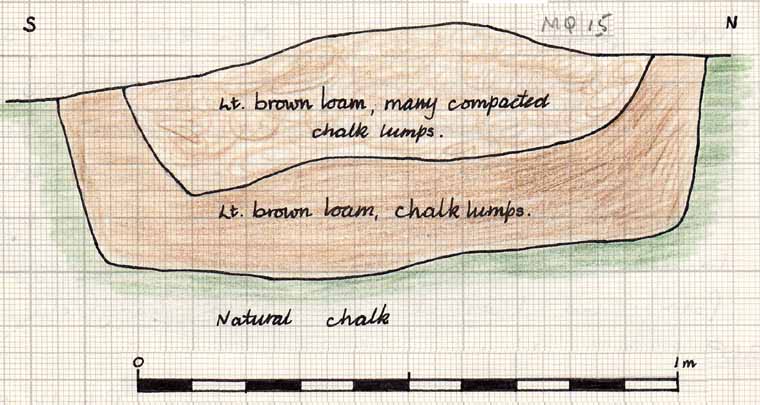
Pit U - drawn section 2 - South
to North
Pit T
Pit T was approx 0.75m deep, and 1.50m wide at the top and 1.05m
wide at the bottom, 2.5m long at the top and 2m at the bottom, i.e. with
steeply sloping sides. Context number MQ14 (Pottery)
(Animal Bone).
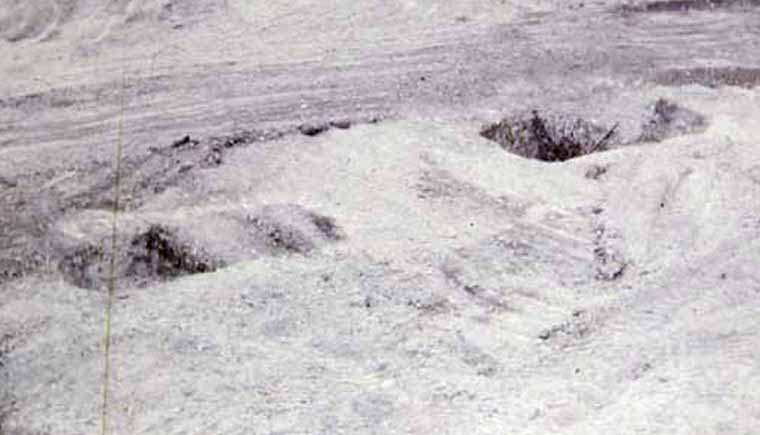
Pits U and T (on the right) under excavation from the North
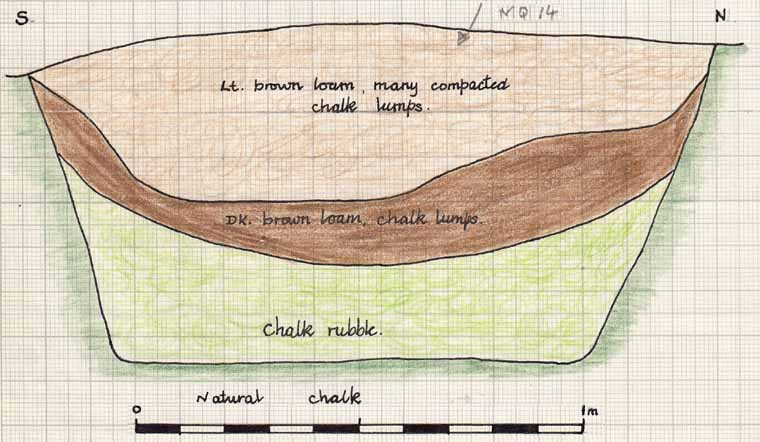
Pit T - drawn section 1 - South
to North
Pit P
Pit P was 32m east of baseline and 108.5m south of peg A. It was 6m
south of Ditch N and circular in shape, diameter 0.5m and 0.12m deep,
very shallow with no finds.
Pit R
Pit R was 32.5m east of baseline and 96m south of peg A, 6m north of
Ditch N. It was circular in shape 0.65m in diameter, 0.15m deep. 7
sherds of pottery (MQ28) (Pottery) were found at the very bottom.
Pit AJ
Pit AJ was 27m east of baseline at the extreme eastern end on the
south edge of Ditch JJ. This feature was only recognised as a separate
pit on completion of the excavation and cleaning up of the eastern end
of Ditch JJ. Maximum length was 2.50m width unknown but at least 0.75m,
depth approx 0.40m. This pit had been cut by Ditch JJ during its
construction and therefore was earlier in date. It is not known if any
of the finds from MQ17 came from this feature. (See postholes ? and ?)
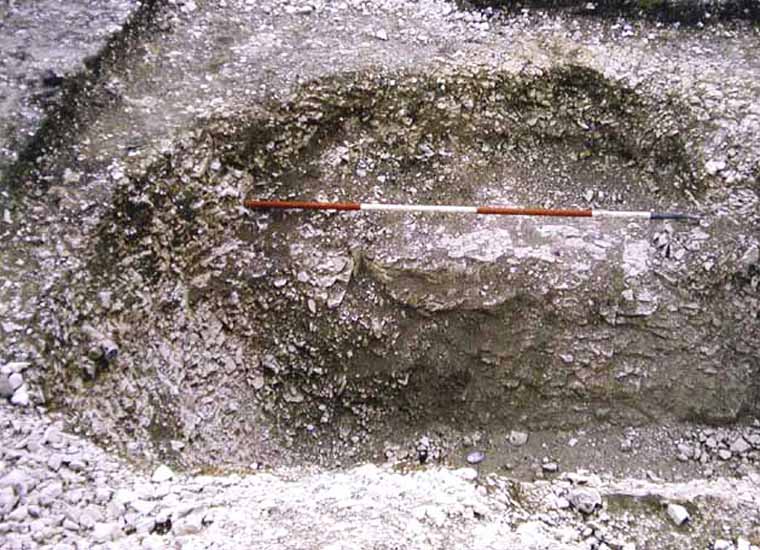
Pit AJ cut by ditch JJ
from the North
1979 Excavation
Of the twenty pits found and excavated in 1979, the following
contained finds: JD, JC, DZ, EC, EA, EB, EP, EV, FR,HV, GT.
Pit EA
This pit was 81.40m east of the baseline and 12.50m south of peg A.
It was oval in shape, 4.20m by 2m. The depth was ??. MQ43
(Pottery) (Animal
bones), MQ48 (Pottery) (Animal
bones),
MQ52 (Pottery)
and MQ53 (Pottery) (Animal bones).
Although this pit was oval at the surface of the chalk, when fully
excavated the bottom was clearly rectangular in shape. Evidently the pit
had been left open to the elements and frosting and weathering had
caused the sides to collapse inwards.
This pit was the most northern and eastern feature discovered during the
1979 excavations and the subsequent soil stripping of the entire rest of
the field in 198? when it was feared the Channel Tunnel railway was
coming through that part of the field.
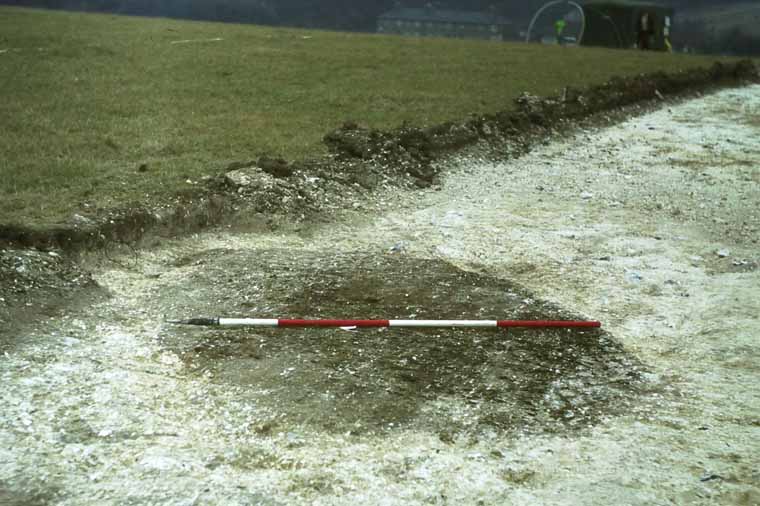
Pit EA from the North West after initial
machine stripping
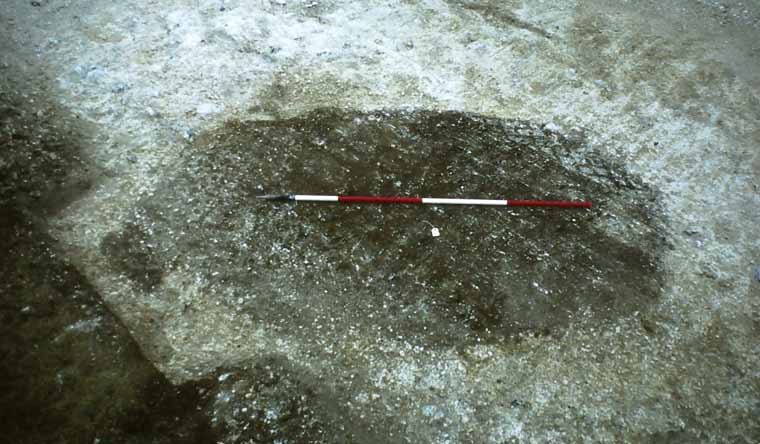
Pit EA from the North East after initial
machine stripping
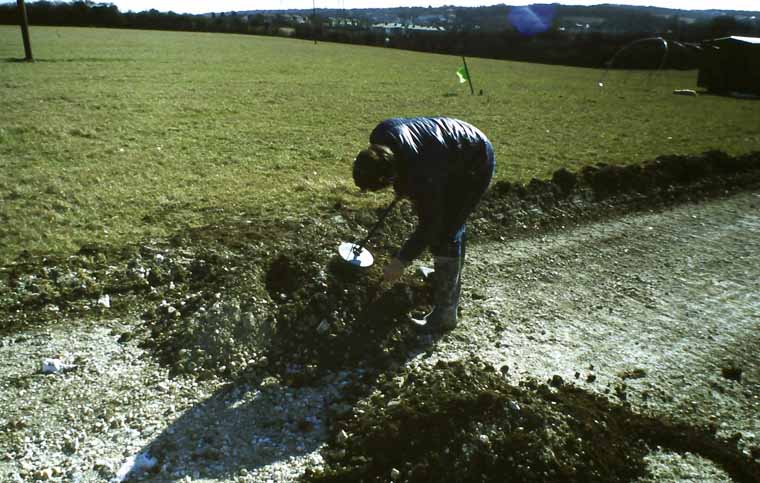
Pit EA Gary detecting spoil
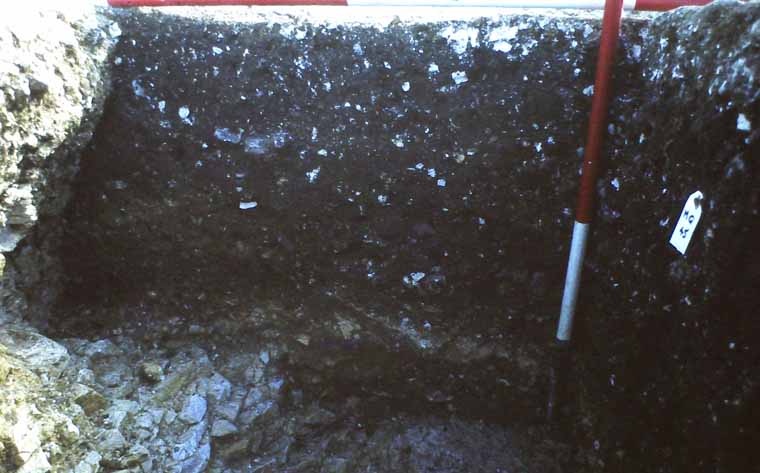
Pit EA South quadrant excavated
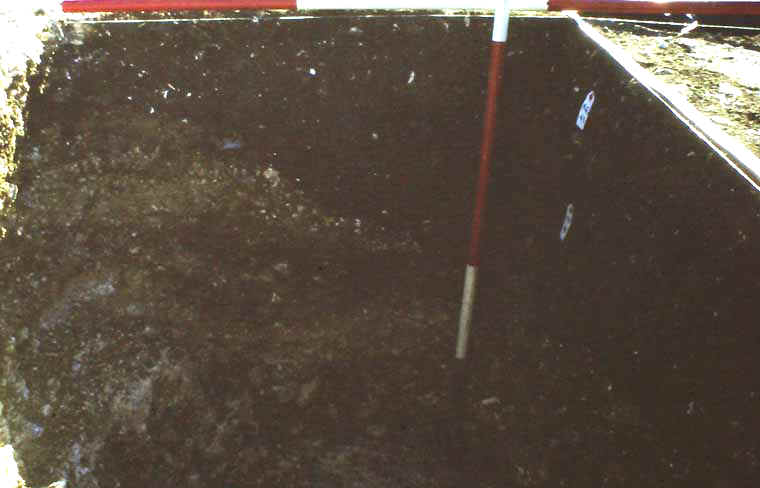
Pit EA North quadrant excavated
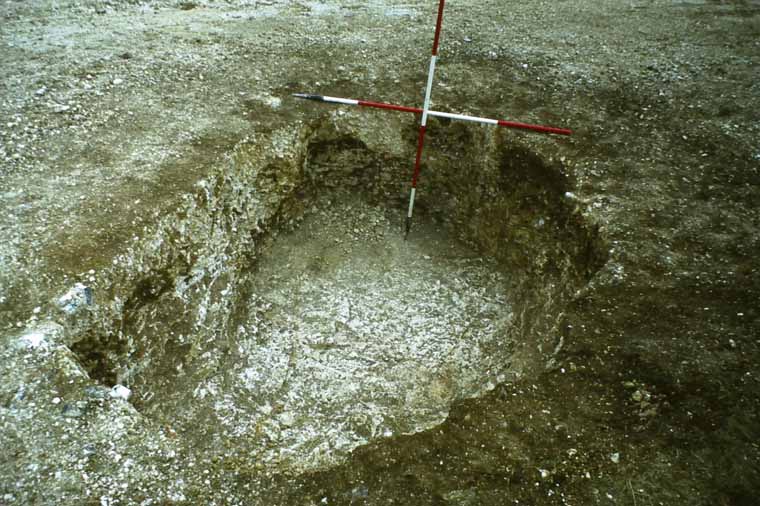
Pit EA Excavated from the East
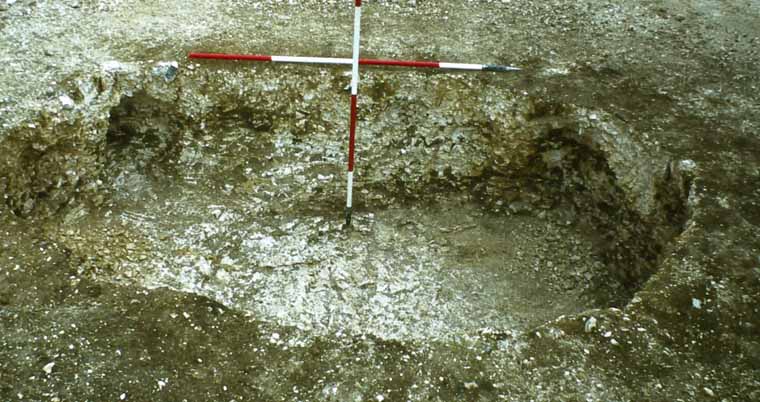
Pit EA Excavated from the North
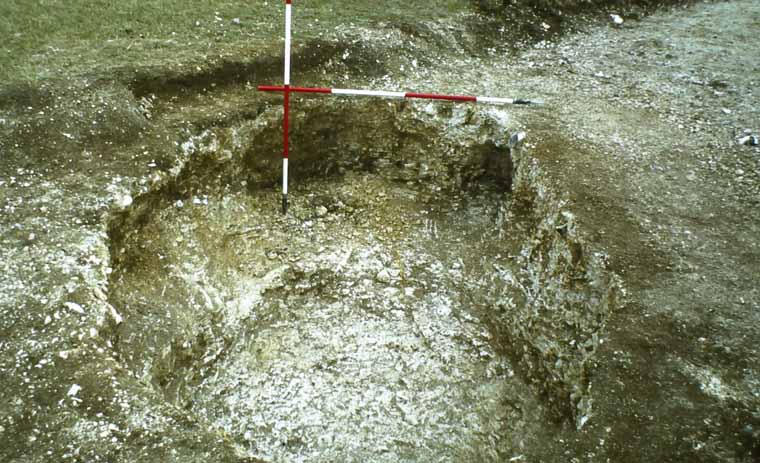
Pit EA Excavated from the West
Pit FR
This pit was 81.40m east of the baseline and 12.50m south of peg A.
It was oval in shape, 4.20m by 2m. The depth was ??. MQ57
(Pottery) and MQ62 (Pottery)
(Animal Bone), Loom
weights MQ55 and MQ 62.
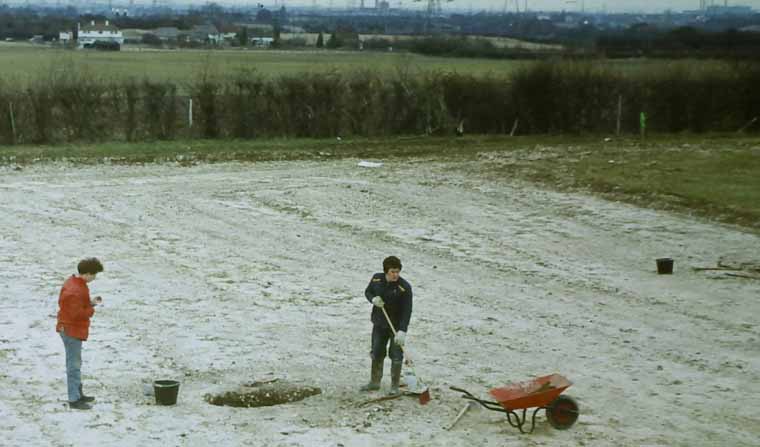
Pit FR under excavation
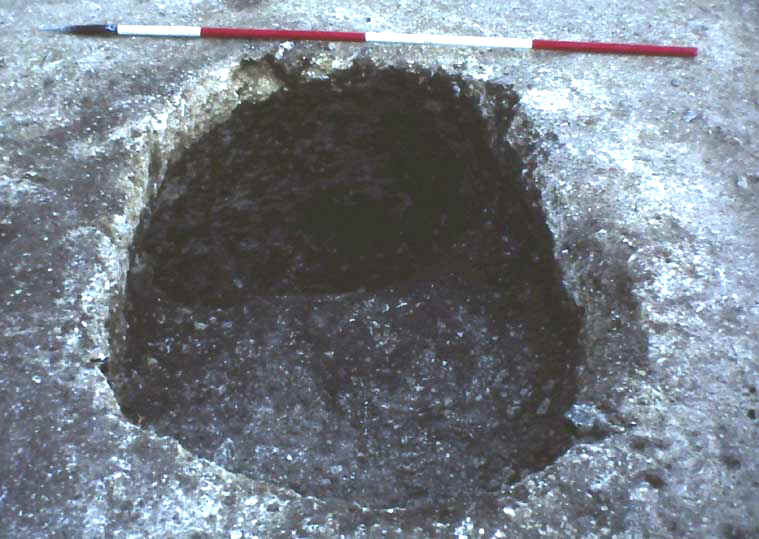
Pit FR part excavated
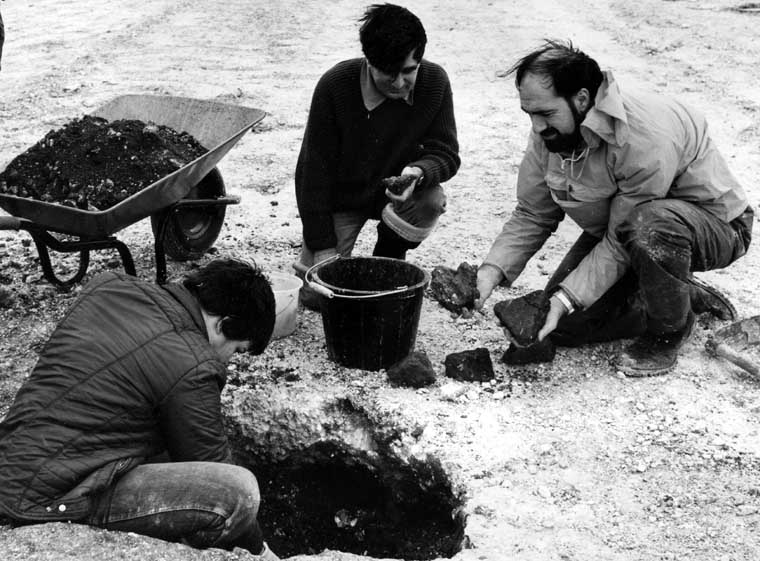
Pit FR under excavation by Gary. Peter Leach
and Ted Connell holding loom weights.
Pit EB
Pit EB was 62.30m east of the baseline and 29.60m south of peg A. It
was sub rectangular in shape, 2.20m by 3.30m, pointing north east. The
depth was ??. MQ45 (Pottery) and MQ51 (Pottery)
(Animal bones)
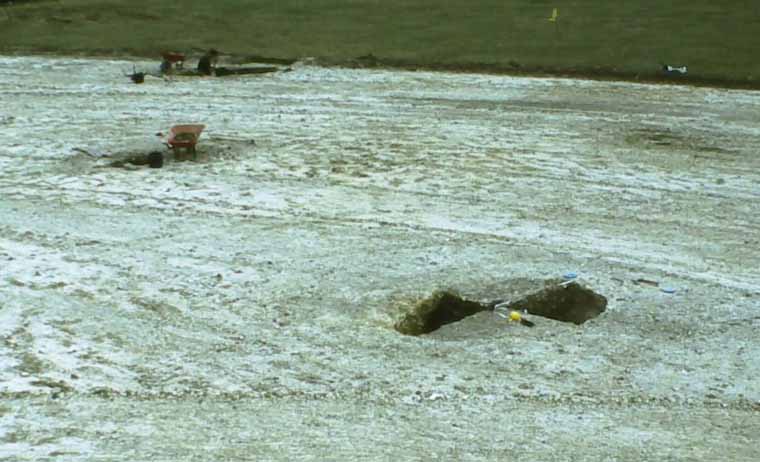
Pit EB from South West. Pits FR and EA in
the distance
Pit JC
Pit JC was 51.54m east of the baseline and 45.89m south of peg A. It
was circular in shape, diameter 1.10m. The depth was 0.05m. MQ63 (Pottery).
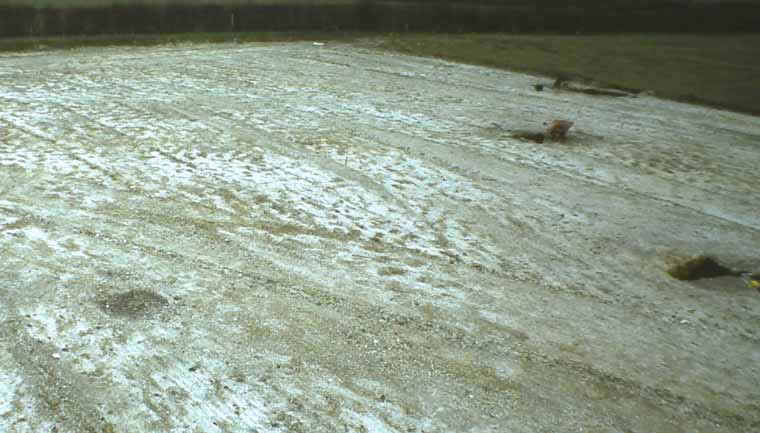
Looking North. Pit JC on left,
EB on right with pits FR and EA in distance
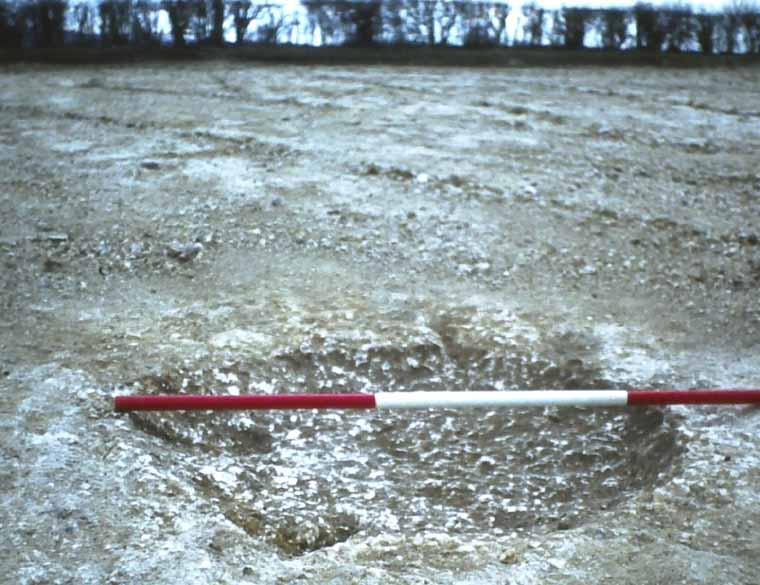
Pit JC excavated looking North
Pit DZ
Pit DZ was 52.84m east of the baseline and 58.03m
south of peg A. It was sub rectangular in shape, 1.60m by 1.40m,
pointing north east. The depth was ??. MQ69
(Pottery) contained dark brown clayey
loam and masses of burnt flint and MQ74 (Pottery) (Animal
Bone), the lower fill of the pit, also
contained dark brown clayey loam with almost no flint at all but with
medium chalk rubble and a large horse skull. MQ78
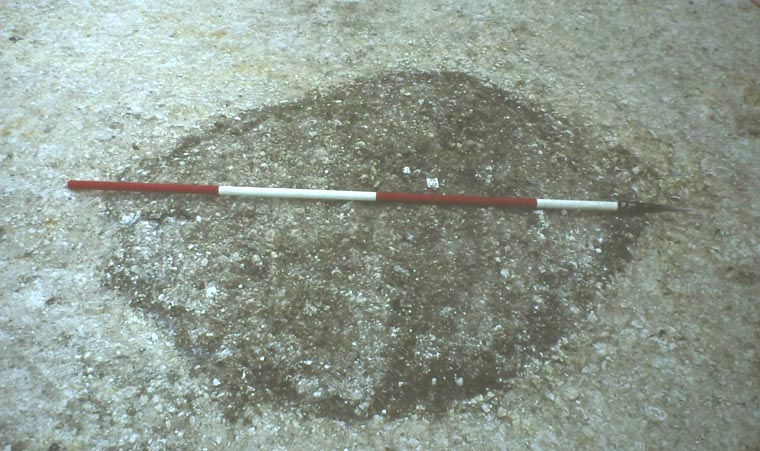
Pit DZ after machine scrapping
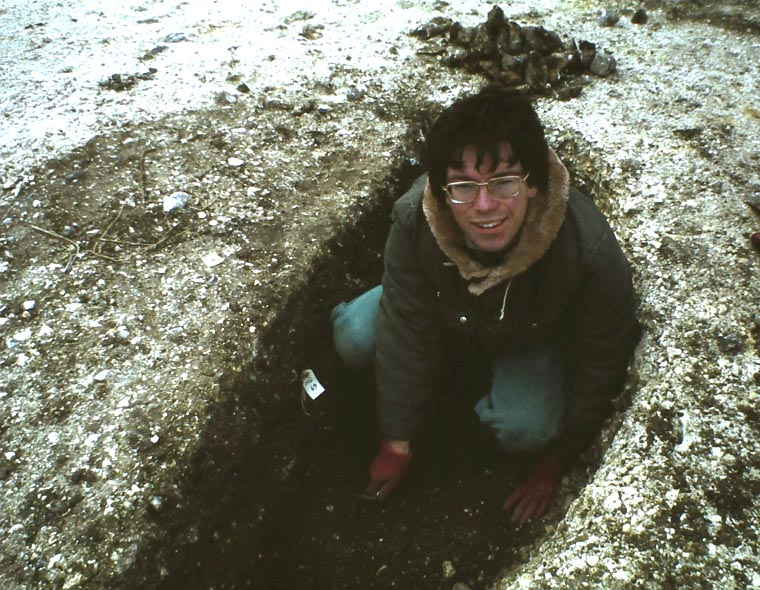
Pit DZ - Half section by Mike Jesen
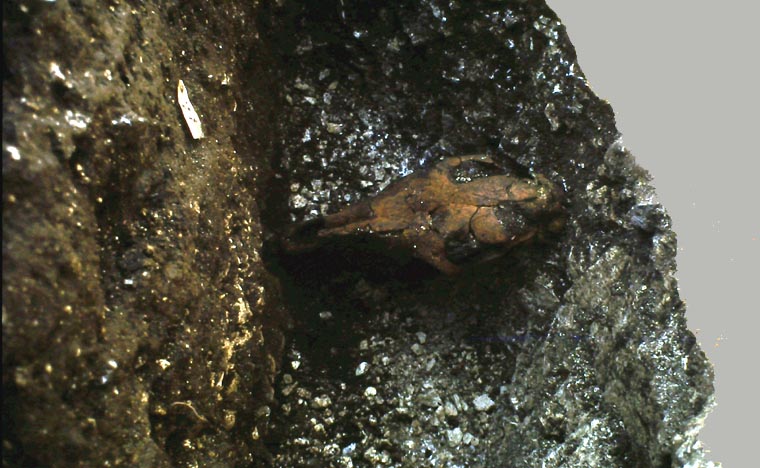
Pit DZ - horse skull at bottom
Pit EC
This pit was 45.65m east of the baseline and 44.08m south of peg A.
It was oval in shape, 2.40m by 2.90m. The depth was ??. MQ46,
MQ56 (Pottery) (Animal
bones), MQ66 (Pottery) (Animal
bones), MQ67 (Pottery), MQ73 (Pottery),
MQ77 (Pottery) (Animal
bones), MQ81 (Pottery)
(Animal bones), MQ103 (Animal
bones) and MQ104 (Animal bones).
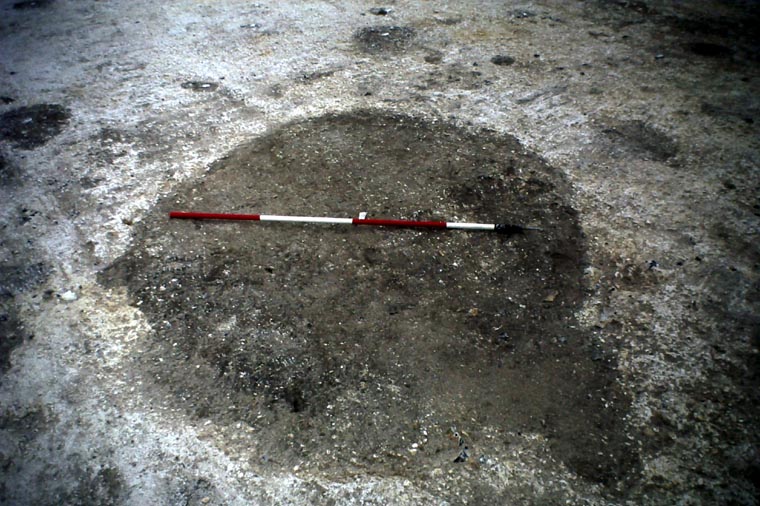
Pit EC after machine scrapping from the NE
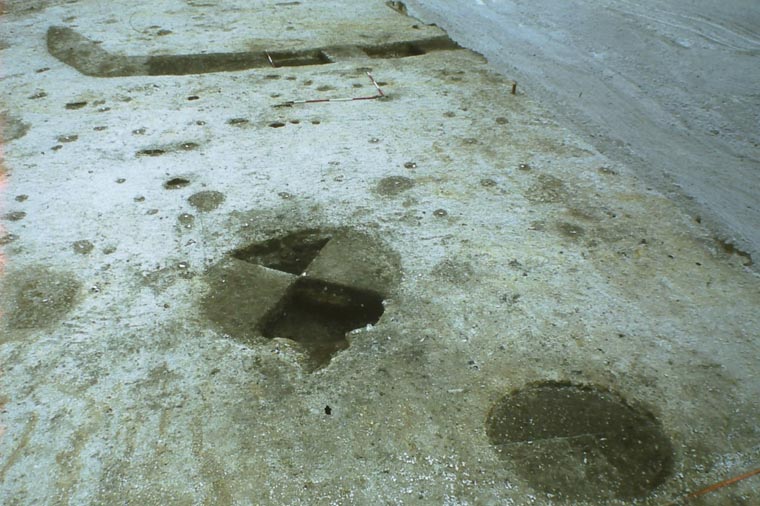
Pit EC quarter sectioned from the N
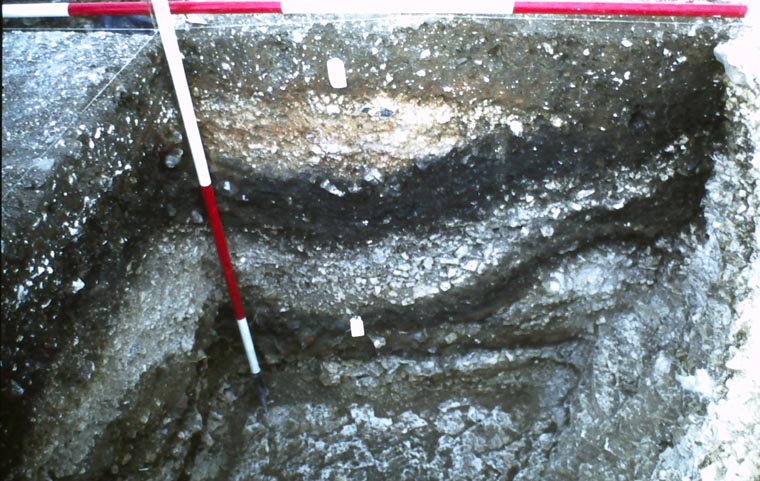
Pit EC quarter sectioned from the ?
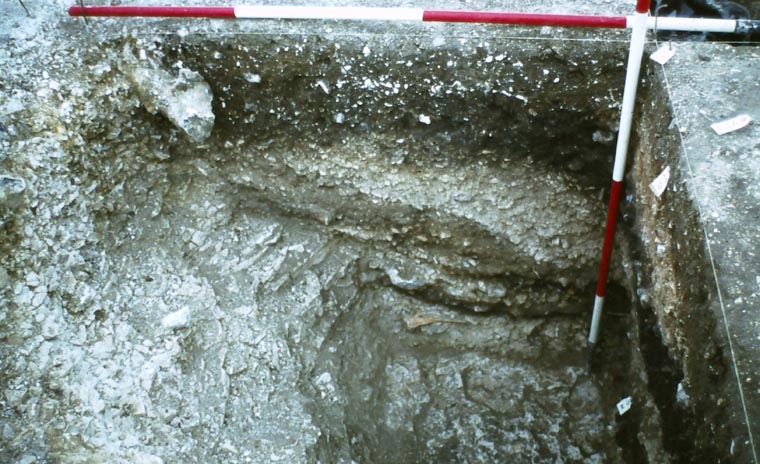
Pit EC quarter sectioned from the ?
Pit EC - drawn section
Pit EC - drawn section
Pit EV
Pit EV was 43.36m east of the baseline and 40.54mm south of peg A. It
was roughly circular in shape, pointing east, 1.85m by 1.75m. The depth
was ??. MQ55 (Pottery) (Animal
bone).
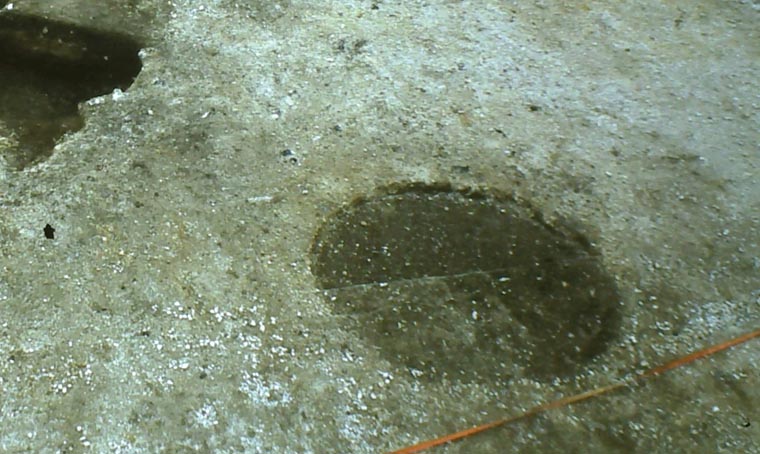
Pit EV
Pit EP
This pit was 68m east of the baseline and 89.70m south of peg A. It
was oval in shape, 4.20m by 2m. The depth was 0.14cm.
MQ42 (Pottery).
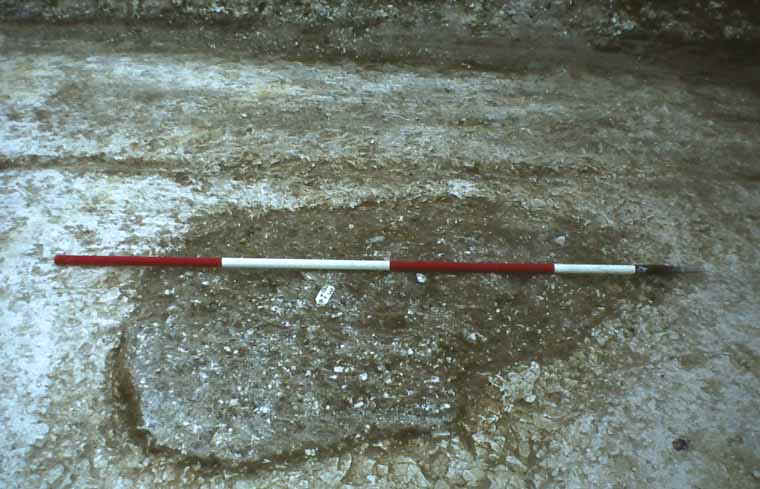
Pit EP from the West
after initial stripping of topsoil
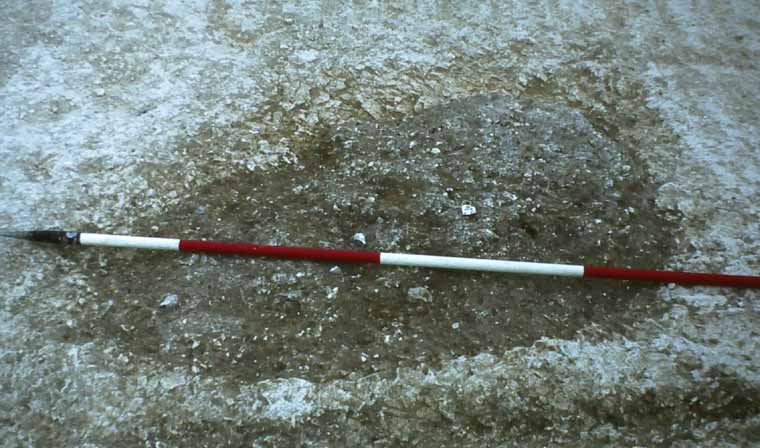
Pit EP from the East
after initial stripping of topsoil
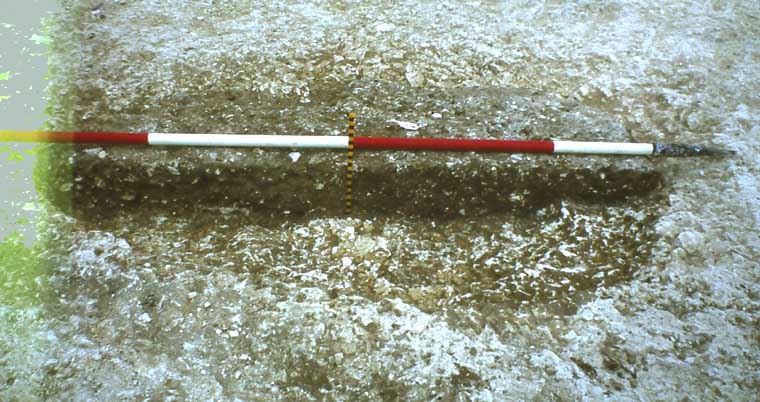
Pit EP from the East half sectioned
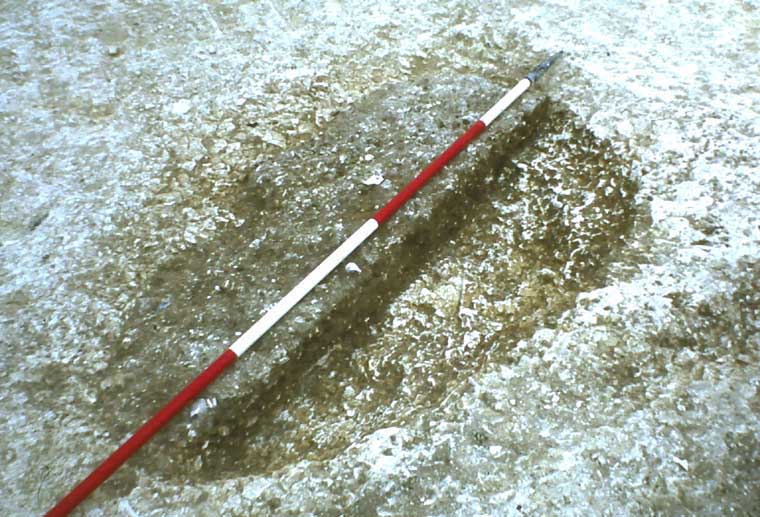
Pit EP from the North East half sectioned
Pit JD
Pit JD was 49.06m east of the baseline and 113.38m south of peg A.
It was circular in shape, diameter 1.30m. The depth was ??. MQ71. No
pottery or animal bone
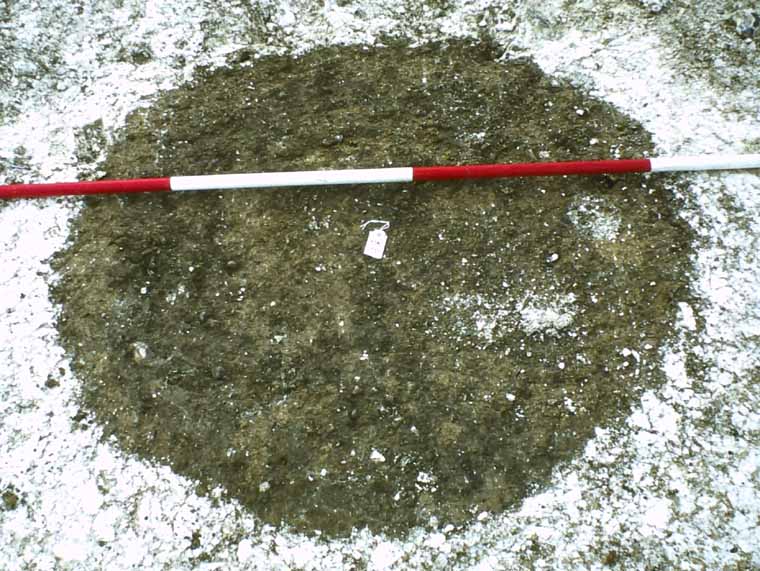
Pit JD
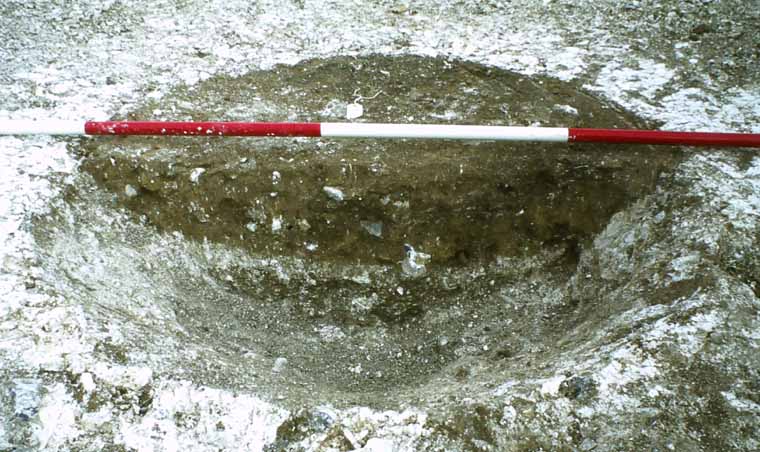
Pit JD half sectioned
Pit EK
Pit EK was 46.20m east of the baseline and 61.70m south of peg A. It
was rectangular in shape, 0.80m by 0.35m, pointing east. The depth was
??. No finds were recorded.
Pit DE
Pit DE was 50.81m east of the baseline and 48.82m south of peg A. It
was oval in shape, 1.40m by 0.80m, pointing north, north west. The depth
was ??. No
pottery or animal bone.
Pit DF
Pit DF was 51.87m east of the baseline and 48.64m south of peg A. It
was sub rectangular in shape, 1.10m by 0.95m, pointing north north west.
The depth was ??. No
pottery or animal bone.
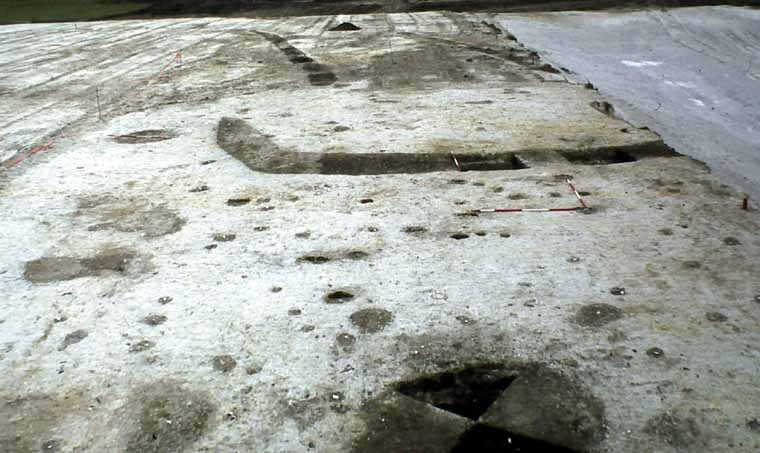
Pits DE+DF to left. Pits DB and DC beyond. Pit
EC bottom centre. Ditch ED in distance.
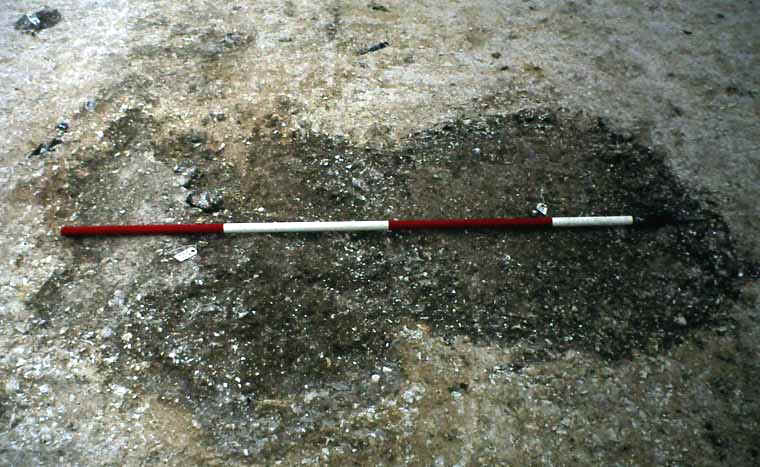
Pits DE+DF looking South
Pit DB
Pit DB was 50.78m east of the baseline and 50.75m south of peg A. It
was an irregular oval in shape, 1.70m by 1.10m, pointing north west. The
depth was 0.25m. The only find recorded was sandstone.
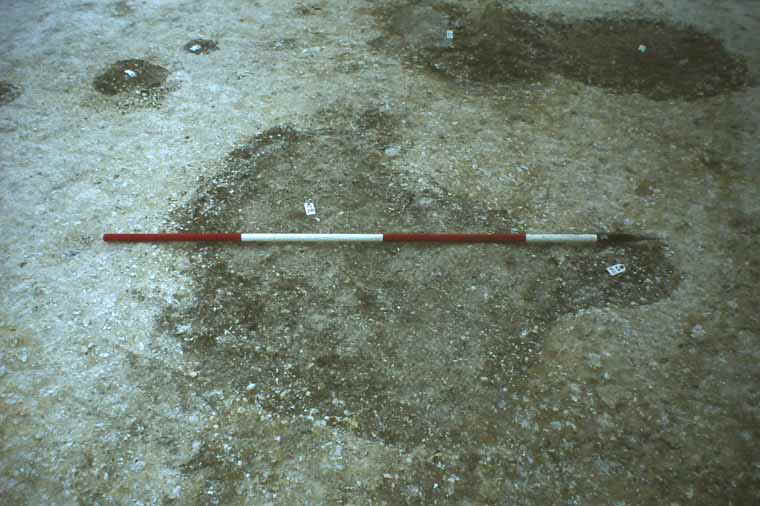
Pit DB and posthole DC
Pit EX
Pit EX was 48.93m east of the baseline and 44.08m south of peg A. It
was rectangular in shape, 1.10m by 0.70m, pointing north. The depth was
0.15. No finds were recorded. This may have been natural.
Pit GP
Pit GP was 62m east of the baseline and 60.68m south of peg A. It
was rectangular in shape, 0.30m by 0.10m, pointing north. The depth was
0.06m. No finds were recorded.
Pit GT
Pit GT was 62.65m east of the baseline and 55.45m south of peg A. It
was sub rectangular in shape, ????m . The depth was 0.60m. Finds
included black pottery MQ93 (Pottery) and daub, but no context number was allocated.
Pit HV
Pit HV was 71.95m east of the baseline and 52.70m south of peg A. It
was oval in shape, 0.36m wide . The depth was 0.20m. Finds included
pottery MQ98 (Pottery) and daub, but no context number was allocated.
Pit GU
Pit GU was 64.30m east of the baseline and 57.10m south of peg A. It was
oval in shape, 0.95m by 0.55m wide, pointing west north west. The depth
was 0.10m. There were no finds.
Pit GY
Pit GY was 65.64m east of the baseline and 55.22m south of peg A. It
was oval in shape, 0.90m by 0.60m wide, pointing north east. The depth
was 0.70m. The pit had a sloping side to the north east. There were no
finds.
Pit HU
Pit HU was 72.09m east of the baseline and 54.24m south of peg A. It
was oval in shape, 0.35m by 0.55m wide, pointing north. The depth was
0.17m. There were no finds.
Back to
Contents Page
Return
to Fawkham and Ash Archaeological Group (FAAG) Introduction |